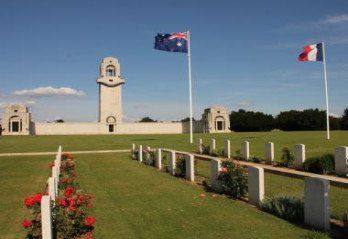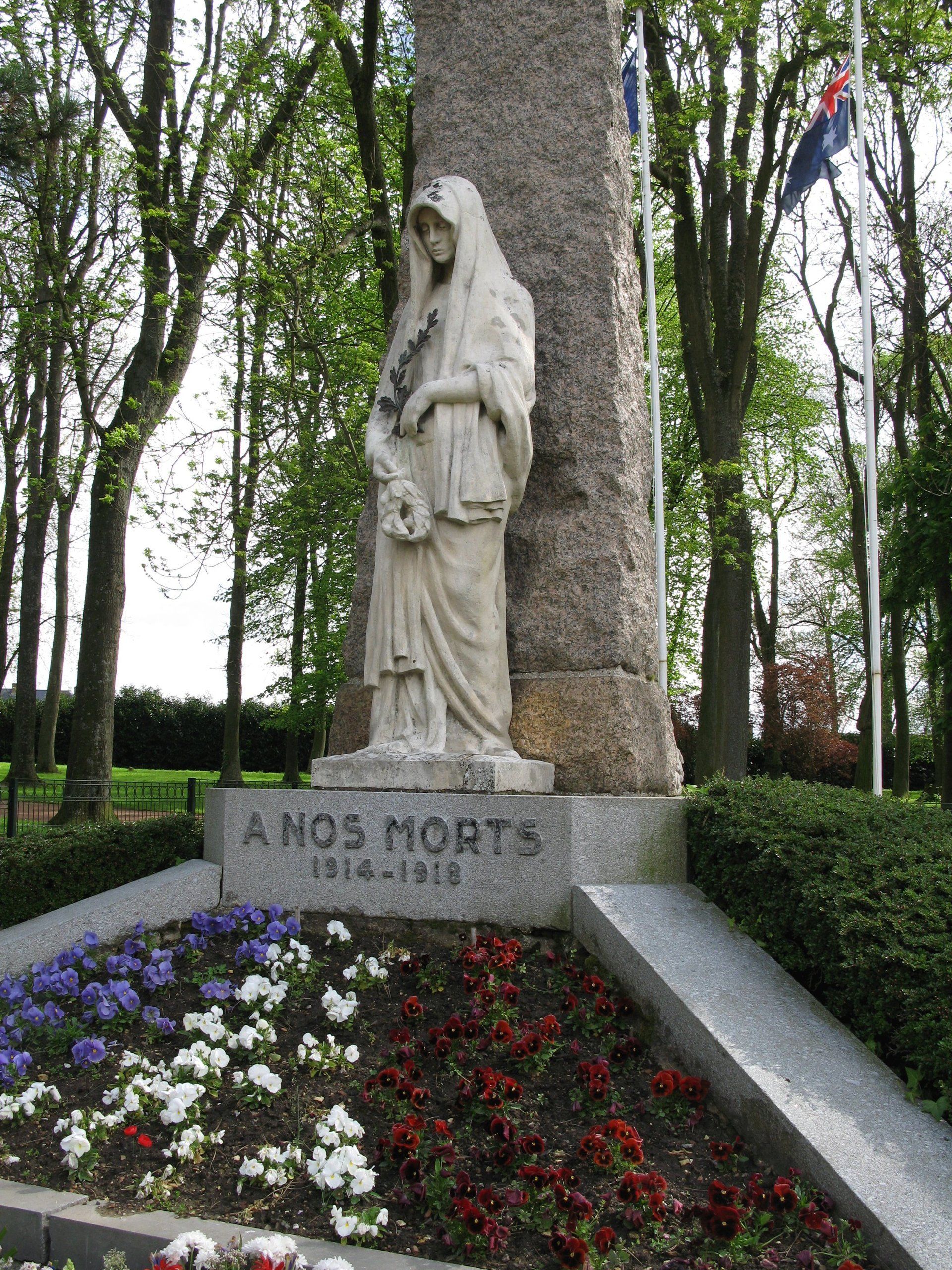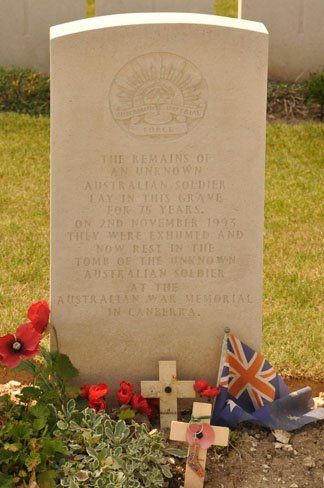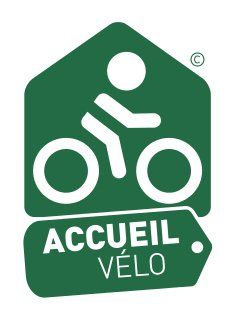To see in Villers-Bretonneux
Australian National Memorial
On the D23 road towards Corbie.
Designed by architect Sir Edwin Lutyens and inaugurated on July 22, 1938 by King George VI of England, this imposing white stone monument preceded by a Commonwealth cemetery, consists of a tall central tower connected to the two pavilions. 'angles by simple walls on which are inscribed the names of 11 000 Australian soldiers who died in France, disappeared or have no known grave.
Each year the Anzac Day ceremony takes place there.
On the D23 road towards Corbie.
Designed by architect Sir Edwin Lutyens and inaugurated on July 22, 1938 by King George VI of England, this imposing white stone monument preceded by a Commonwealth cemetery, consists of a tall central tower connected to the two pavilions. 'angles by simple walls on which are inscribed the names of 11 000 Australian soldiers who died in France, disappeared or have no known grave.
Each year the Anzac Day ceremony takes place there.
Sir John Monash Center
The Sir John Monash Center, funded by the Australian Government, will open at the Australian National Memorial in April 2018 to tell the story of Australian soldiers on the Western Front in France and Belgium during the First World War.
The center will bear the name of General Sir John Monash who led the Australian forces on the Western Front in 1918, including the famous victory of 4 July 1918 in Le Hamel, whose strategy later became a model for future military operations. .
In the heart of the center, the visitor will be immersed in an immersive experience through state-of-the-art multimedia technology, unprecedented among the Western Front's memorial sites, which will generate a sensory and informative experience in English, French and German.
The interactive route of the center will be completed by period objects with a particular resonance for Australians.
The center will provide visitors with a better understanding of Australia's role in the Western Front as well as the impact of the war and the heavy losses suffered by this still emerging nation.
More information on the site SJMC
The Sir John Monash Center, funded by the Australian Government, will open at the Australian National Memorial in April 2018 to tell the story of Australian soldiers on the Western Front in France and Belgium during the First World War.
The center will bear the name of General Sir John Monash who led the Australian forces on the Western Front in 1918, including the famous victory of 4 July 1918 in Le Hamel, whose strategy later became a model for future military operations. .
In the heart of the center, the visitor will be immersed in an immersive experience through state-of-the-art multimedia technology, unprecedented among the Western Front's memorial sites, which will generate a sensory and informative experience in English, French and German.
The interactive route of the center will be completed by period objects with a particular resonance for Australians.
The center will provide visitors with a better understanding of Australia's role in the Western Front as well as the impact of the war and the heavy losses suffered by this still emerging nation.
More information on the site SJMC
French War Memorial
Place Charles de Gaulle
Inaugurated in 1929, it consists of a red granite stele on a blue granite base and a tearful woman statue which holds a wreath in her right hand and a palm in her left hand.
At the bottom of the monument is a plaque bearing the following inscription: "Remembrance to Australian friends dead for the liberation of Villers-Bretonneux".
Place Charles de Gaulle
Inaugurated in 1929, it consists of a red granite stele on a blue granite base and a tearful woman statue which holds a wreath in her right hand and a palm in her left hand.
At the bottom of the monument is a plaque bearing the following inscription: "Remembrance to Australian friends dead for the liberation of Villers-Bretonneux".
The town hall
Located at the entrance of the small garden in front of the town hall, a commemorative plaque sculpted in bronze and designed by the Australian Dr. Ross Bastiaan, tells - in French and English - the battle of Villers-Bretonneux.
Many references to Australia are also found in the names of the streets of Villers-Bretonneux: Victoria Street, Melbourne Street, Robinvale Place.
Located at the entrance of the small garden in front of the town hall, a commemorative plaque sculpted in bronze and designed by the Australian Dr. Ross Bastiaan, tells - in French and English - the battle of Villers-Bretonneux.
Many references to Australia are also found in the names of the streets of Villers-Bretonneux: Victoria Street, Melbourne Street, Robinvale Place.
The town hall
Opposite the town hall, the Place du Forum, imagined in the form of an ancient theater, is embellished since 2013 with a painting by the Australian artist Kaff-Eine.
Opposite the town hall, the Place du Forum, imagined in the form of an ancient theater, is embellished since 2013 with a painting by the Australian artist Kaff-Eine.
Monument to the Tanks
On the road D168, towards Cachy, a small monument recalls the first duel of the history between German tanks (A7V) and British tanks (Mark IV and Whippets) on April 24, 1918.
Tank Monument For this battle, thirteen A7Vs are divided into 3 attack groups:
- the first, composed of 3 A7V, on Villers-Bretonneux
- the second, composed of 6 A7V, on the southern edge of Villers-Bretonneux and the Bois d'Aquenne
- the third, composed of 4 A7V, on the village of Cachy.
The battle is over, two tanks will remain on the ground: the
"ELFRIEDE" and the "MEPHISTO".
After the German withdrawal in the area, the "Mephisto" was recovered by Australian troops and sent to Australia as a war trophy. He remains on display at Queensland Museum in Brisbane. It happens to be nowadays, the only visible A7V tank and survivor of the reinforcement.
A 1 / 12.5 scale Mephisto tank model is on display in the Franco-Australian museum in Villers-Bretonneux.
On the road D168, towards Cachy, a small monument recalls the first duel of the history between German tanks (A7V) and British tanks (Mark IV and Whippets) on April 24, 1918.
Tank Monument For this battle, thirteen A7Vs are divided into 3 attack groups:
- the first, composed of 3 A7V, on Villers-Bretonneux
- the second, composed of 6 A7V, on the southern edge of Villers-Bretonneux and the Bois d'Aquenne
- the third, composed of 4 A7V, on the village of Cachy.
The battle is over, two tanks will remain on the ground: the
"ELFRIEDE" and the "MEPHISTO".
After the German withdrawal in the area, the "Mephisto" was recovered by Australian troops and sent to Australia as a war trophy. He remains on display at Queensland Museum in Brisbane. It happens to be nowadays, the only visible A7V tank and survivor of the reinforcement.
A 1 / 12.5 scale Mephisto tank model is on display in the Franco-Australian museum in Villers-Bretonneux.
Cross of Villers-Bretonneux
In the small garden behind the church is a stone replica (donated to ANZAC day 2008) of the wooden cross that was erected by the 51st Australian Battalion on the battlefield on April 24, 1918.
The original, taken to Australia in 1956, is now in St. George's Cathedral in Perth.
In the small garden behind the church is a stone replica (donated to ANZAC day 2008) of the wooden cross that was erected by the 51st Australian Battalion on the battlefield on April 24, 1918.
The original, taken to Australia in 1956, is now in St. George's Cathedral in Perth.
Borne Touring-Club
On the D1029 road towards Saint Quentin
In the years following the end of the First World War, the Touring Club of France and Belgium decided to mark the front line as it was during the victorious offensive of the Second Battle of the Marne on July 18, 1918 , from the North Sea to the Swiss border (750 km). Their number is 119.
1m high, these pink granite posts are the work of the sculptor Paul Moreau-Vauthier. They are capped with a laurel wreath surmounted by a helmet (Belgian, British or French depending on the sector). On the sides is the equipment of the soldier of the time: grenades, tin and gas mask case. Palms are engraved on each corner while one finds the inscription "Here was repulsed the invader" on one of the sides.
On the D1029 road towards Saint Quentin
In the years following the end of the First World War, the Touring Club of France and Belgium decided to mark the front line as it was during the victorious offensive of the Second Battle of the Marne on July 18, 1918 , from the North Sea to the Swiss border (750 km). Their number is 119.
1m high, these pink granite posts are the work of the sculptor Paul Moreau-Vauthier. They are capped with a laurel wreath surmounted by a helmet (Belgian, British or French depending on the sector). On the sides is the equipment of the soldier of the time: grenades, tin and gas mask case. Palms are engraved on each corner while one finds the inscription "Here was repulsed the invader" on one of the sides.















